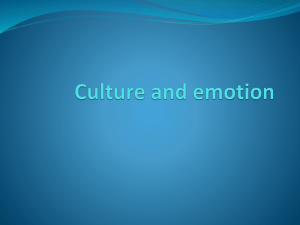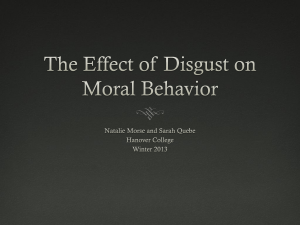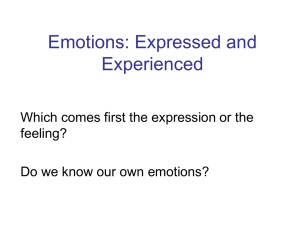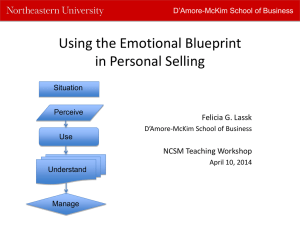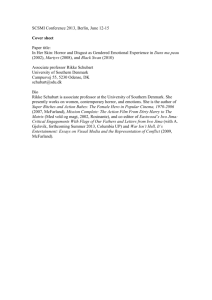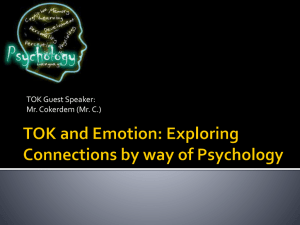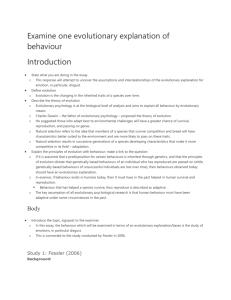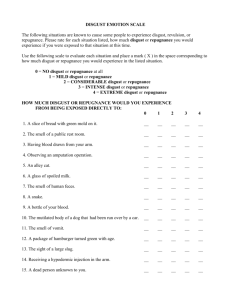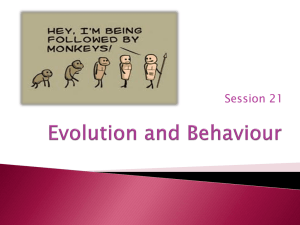Culture and emotion
advertisement
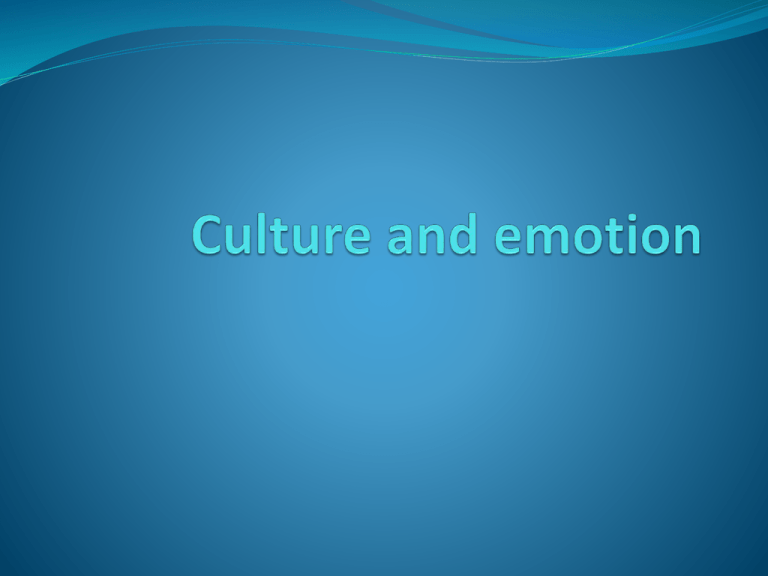
Hofstede’s approach Power distance Uncertainty avoidance Individualism-collectivism Masculinity-femininity Bond: Based on Chinese data, added Confucian work dynamism (or Long-term orientation) What about levels in different countries? (www.geerthofstede.com) 140 120 100 80 Power distance Individualism 60 Masculinity Uncertainty Avoid Long Term Orient 40 20 0 United States Malaysia India China France Ghana Hungary Schwartz world value survey At individual level (10 values): Openness to change vs. tradition Self-enhancements vs. self-transcendence http://changingminds.org/explanations/values/schwart z_inventory.htm At nation level (7 values): Autonomy-embeddedness Hierarchy-egalitarianism Mastery-harmony http://www.imointernational.de/englisch/html/siebenwerte_en.html Other approaches Smith et al. Loyalty to organization vs. utilitarianism Conservation vs. egalitarianism Inglehart Self-expression vs. survival Rational-legal vs. traditional authority Tight vs. Loose cultures (Gelfand et al., 2011) How does this concept relate to the others? Is this a country-level variable? Why are certain countries high or low? What other effects might this have? Culture vs. evolution Are the approaches contradictory or complementary? What are some limitations of this area of research? Cultural differences in Self-concept Self-consistency (self-monitoring) What does it mean to be multi-cultural? Self-enhancement Approach/avoidance Agency and control Desire to fit in Honor culture Relationships In vs out group Friendship differences Culture and cognition Cognition (Nisbett, Peng, Choi, & Norenzayan, 2001) Analytic vs. holistic thinking Attention to background Categorization Reasoning styles Attribution Moderators of cognitive differences Situational salience Diagnosticity of behavior Multilevel analyses (Miyamoto, 2013) Distal situational factors Ancient Greek vs. Chinese cultures History Settlement/frontiers Religion Social class Proximal leve l situational factors Analytic vs. holistic: Parenting practices Nonverbal communication Cultural products Independent vs. interdependent Textbooks Magazine ads Social interactions Individual level factors Priming of culture Individual differences Why isn’t there much difference at the individual level? Distal/proximal interactions Power’s effects on cognition Differences in power by culture and effects on cognition Personal vs. social power What are the longitudinal effects of these proximal factors? Culture and emotion Emotion Basic emotions Display rules Intensity of emotions Happiness In-group advantage in “emotional dialect” Emotions Where do emotions come from and what is their purpose? Appraisal theory Relevance, congruence, responsibility, control, power Interpret important event or object, give it meaning, get emotion Critiques of appraisal theory Schachter’s two-factor theory of emotion Misattribution of arousal Mood congruence Affect infusion model (Forgas) Low infusion: direct access and motivated processing High infusion: heuristic and substantive Similarities to other dual process: HSM and ELM How are emotions social? Contagion of emotion vs. norms (bottom up vs. top down) Unconscious emotion (subliminal faces) Moral judgments: trustworthiness and dominance Embodiment of emotion Niedenthal et al., 2007 What are examples of embodied emotions? What are mirror neurons, and how do they relate to embodied emotion? Disgust (Chapman & Anderson, 2013) What is disgust? Why do we feel disgust (what purpose does it serve)? What makes us feel disgust? Do moral transgressions lead to feelings of disgust? Theories: Moral domain theory (Turiel) Moral, societal, psychological Five foundations theory (Haidt) Do we feel disgust at all moral transgressions, or just those related to purity violations? What evidence do they provide? Neuroimaging Self-report measures Implicit measures Manipulations of disgust Individual differences Disgust Scale (Haidt et al., 1994) http://www.yourmorals.org/disgust.php Three Domain Disgust Scale (Tybur et al., 2009) http://citeseerx.ist.psu.edu/viewdoc/download?doi=10 .1.1.186.6114&rep=rep1&type=pdf What causes IDs in disgust? What are they correlated with? People with OCD General disgust issues How is moral disgust different from physical disgust? How is it different from anger? Why would we have moral disgust? Which of their models seems best supported? How are they similar and different?
